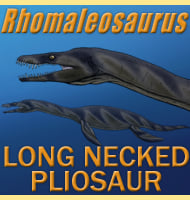Palaeochersis
In Depth Palaeochersis is a genus of turtle that lived in South America during the late Triassic. Further Reading - Late Triassic turtles from South America. - Science 268:855-858. - G. W. Rougier, M. S. de la Fuente & A. B. Arcucci - 1995. - Anatomy and relationships of Palaeochersis talampayensis, a Late Triassic turtle … Read more
